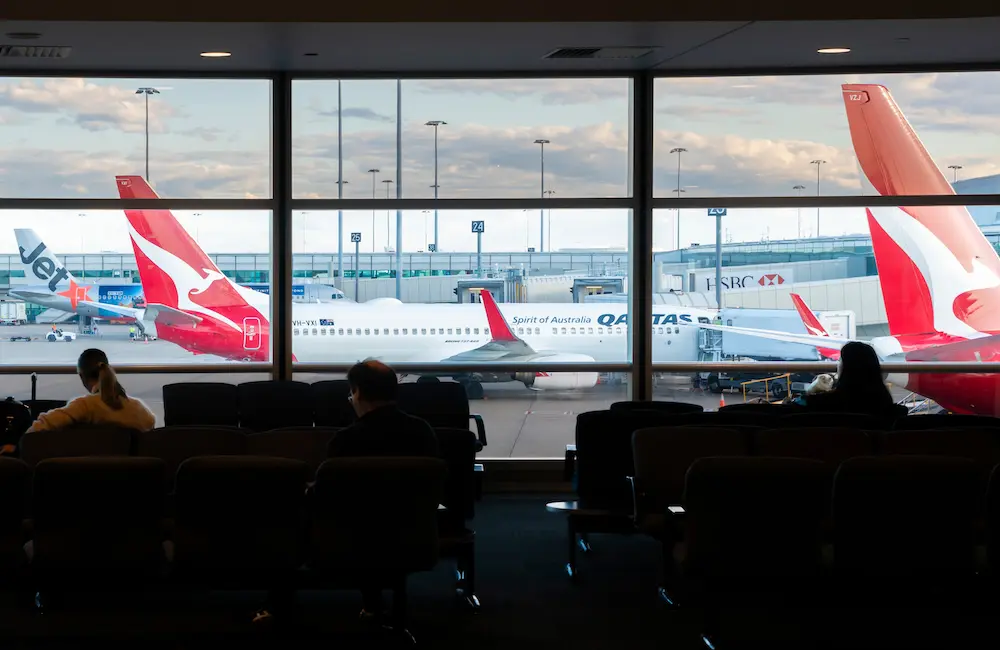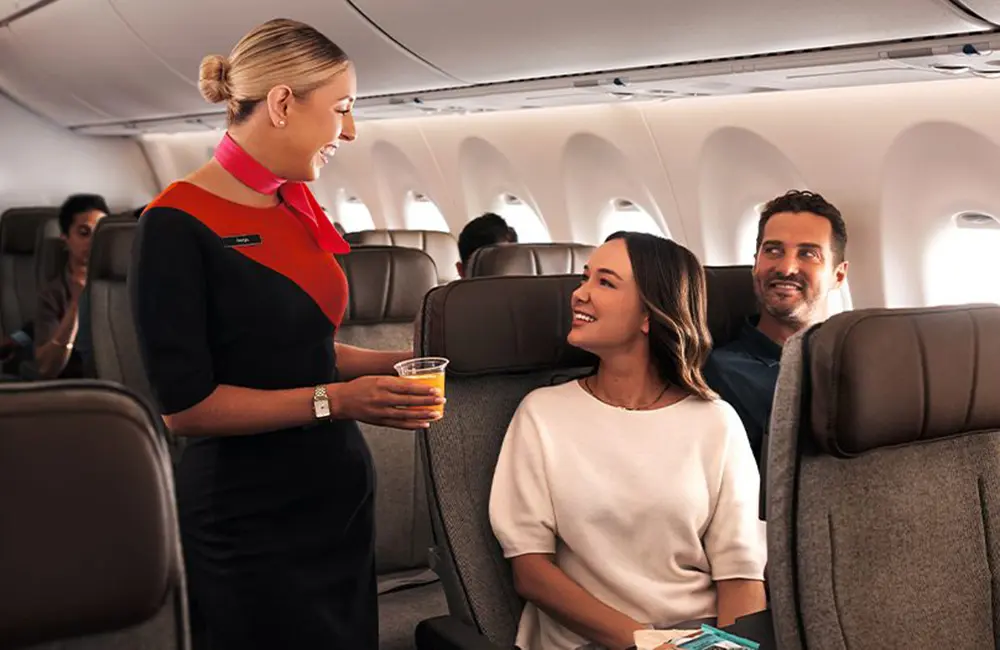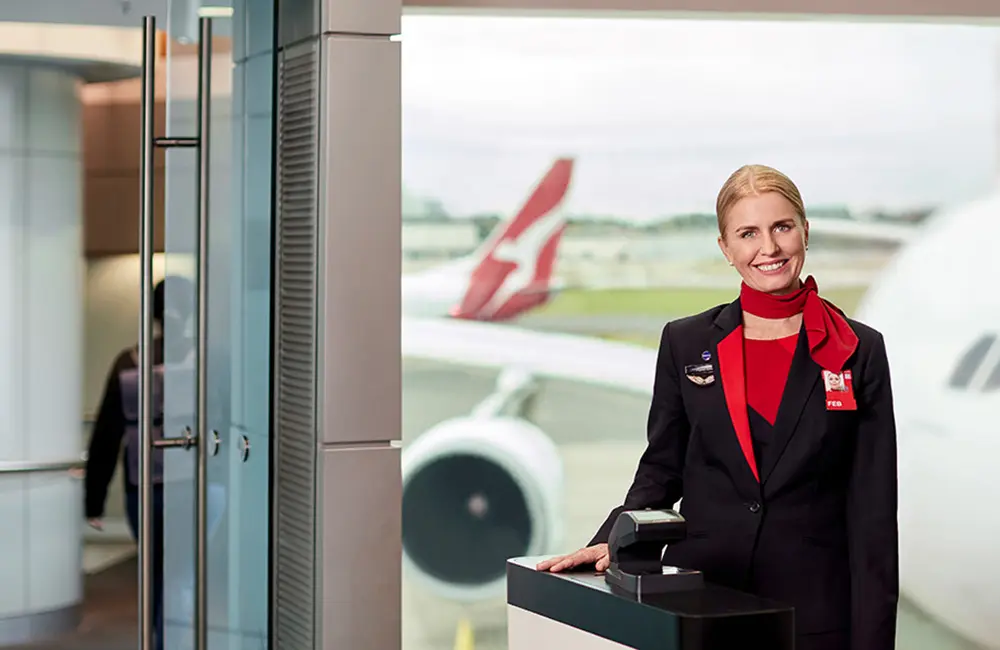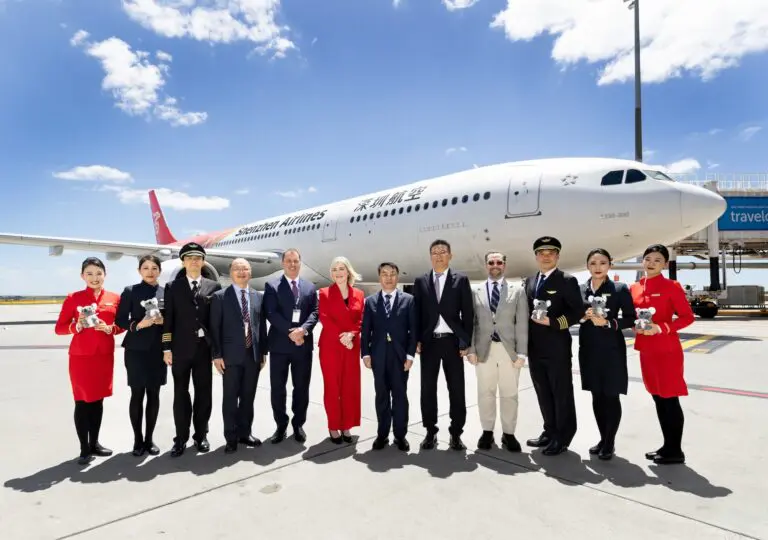Qantas’ half-yearly report card is out… and profits are in. The flying kangaroo has reported a significant boost in profit for the first half of the financial year, on the back of strong demand across its network.
Qantas Group recorded an Underlying Profit Before Tax of $1.39 billion, marking an 11 per cent year-on-year increase, while Statutory Profit After Tax rose by 6 per cent to $923 million.
The results were largely driven by robust travel demand for both Qantas and Jetstar, with more than 28 million passengers carried – a rise of nearly 10 per cent – across the group’s domestic and international networks.
According to Qantas, a key contributor to its success has been its dual-brand strategy, which balances high-end and budget travel options.

For Qantas, corporate and premium travel remained strong, while Jetstar benefited from high living cost concerns, carrying a record number of passengers – one in three of whom paid less than $100 for their ticket.
“The Group’s performance highlights the benefits of having both a premium and a low fares airline and a strong loyalty program,” Qantas Group CEO Vanessa Hudson said.
“We’re seeing progress from the investments we are making for our customers and people but we know there’s more work to do to consistently deliver in the moments that matter. This is a key part of rebuilding trust and continues to be our focus.”
The arrival of new, more fuel-efficient aircraft also played a major role in bolstering profitability, with Jetstar’s growing fleet of Airbus A321LRs and A320neos delivering scale benefits, lower fuel costs and improved customer satisfaction.
“With a growing fleet of new aircraft, Jetstar went from strength to strength delivering a better experience for customers and an improved financial performance. Importantly, Jetstar was able to help more Australians take a holiday for less,” Hudson remarked.
This morning, Qantas also announced it is set to deliver a next-generation inflight experience with a major upgrade to its Boeing 737 cabins, aligning with its broader fleet renewal strategy.
International and Domestic

Qantas Group International saw positive momentum, with demand for premium cabins surging and load factors in First, Business, and Premium Economy climbing by 2.5 per cent.
New Qantas International routes included Perth-Paris and Brisbane-Manila/Palau/Vanuatu.
International posted a 5 per cent increase in earnings with an Underlying EBIT of $497 million.
Elsewhere, Jetstar expanded its international footprint, growing capacity by 26 per cent and adding six new routes, including Brisbane-Bangkok and Sydney-Vanuatu.
The increase in available seats across the group contributed to a 6.6 per cent drop in average Group International fares.
On the domestic front, Qantas maintained its revenue share of corporate and small-to-medium business travel, while demand for leisure travel remained strong, the airline said.
Group Domestic achieved an Underlying EBIT of $916 million, with a 5 per cent improvement in unit revenue and a 2 percentage point increase in load factors.

“Qantas Domestic revenue grew strongly and, like Jetstar, will see significant benefits as its fleet renewal ramps up, starting with the arrival of the A321XLR in the coming months,” Hudson said.
Meanwhile, Jetstar’s domestic earnings skyrocketed by 54 per cent, buoyed by the introduction of eight new aircraft and an 8 per cent increase in capacity.
While the results were largely positive, Qantas acknowledged challenges, including higher costs due to inflation, rising airport charges and aviation supply chain constraints. However, the airline continues to offset these pressures through its ongoing transformation program, designed to improve efficiency and reduce expenses.
Service, Loyalty and outlook

Customer satisfaction showed notable improvement across all segments, with Qantas’ net promoter score rising by 13 points and Jetstar’s by 9. Read our recent review of the carrier’s service on QF1 Sydney to Singapore.
Today, Qantas also confirmed that its new group boarding process will be rolled out to all domestic, regional and international flights, which it expects to improve punctuality and consequently, customer satisfaction.
Elsewhere, the airline has introduced various initiatives, including improved inflight dining, expanded lounges and upgraded aircraft cabins. A thank-you payment of $1,000 was also issued to 27,000 non-executive employees in recognition of their contributions.
Meanwhile, Qantas Loyalty remained a key profit driver, reporting an Underlying EBIT of $255 million and an 11 per cent increase in active members to 17 million.
The expansion of Classic Plus rewards also provided an additional 20 million reward seats, doubling points redemption growth among engaged members.
In sustainability, Qantas continued to make progress on its 2030 targets, committing over $100 million to sustainable aviation fuel projects and environmental initiatives.
The airline also enhanced its inflight recycling program, diverting more than 130 tonnes of waste.
Community projects included a new four-year partnership with Surf Lifesaving Australia and an ongoing collaboration with the Australian Red Cross to train 750 new volunteers.

Looking ahead, Qantas expects continued strong travel demand, with Group Domestic unit revenue forecast to grow by 3-5 per cent in the second half of the financial year. International unit revenue is expected to remain stable, despite currency fluctuations.
The Group is also preparing to welcome seven new aircraft, including Qantas’ first A321XLR and additional A220s and Jetstar aircraft, further strengthening its network and fleet reliability.
“Australians have always loved to travel and continue to prioritise it over other spending options. Looking forward, we continue to see intention to travel from leisure and corporate customers remaining high,” Hudson stated.
“Our financial strength means we are now in a position to pay our shareholders dividends for the first time in almost six years.”
“The dedication of our people and the continued loyalty of our customers underpin our success, and I want to sincerely thank them.”
Prioritise people, says TWU

Following Qantas’ announcement, the Transport Workers’ Union (TWU) has urged the airline to invest in secure aviation jobs across its supply chain. This comes after two years of profits surpassing $2 billion for the carrier.
“If Qantas wants to return to its status as the Flying Kangaroo then there’s a clear path forward: it must pay its fair share to see a return to decent aviation jobs and standards, after a decade of slashing wages and fanatical outsourcing,” TWU National Secretary Michael Kaine said.
“Ultimately we need independent oversight in aviation – otherwise we’ll keep seeing airline and airport executives making decisions for short-term profit gain instead of a decent industry for all.”
This week, Qantas launched a seven-day major sale, discounting one million Business and Economy seats to 60 destinations across Australia.






